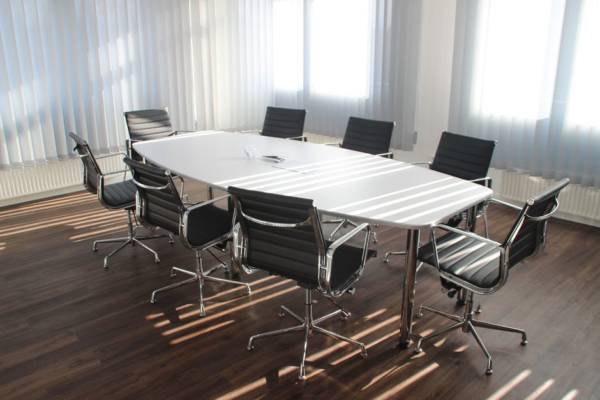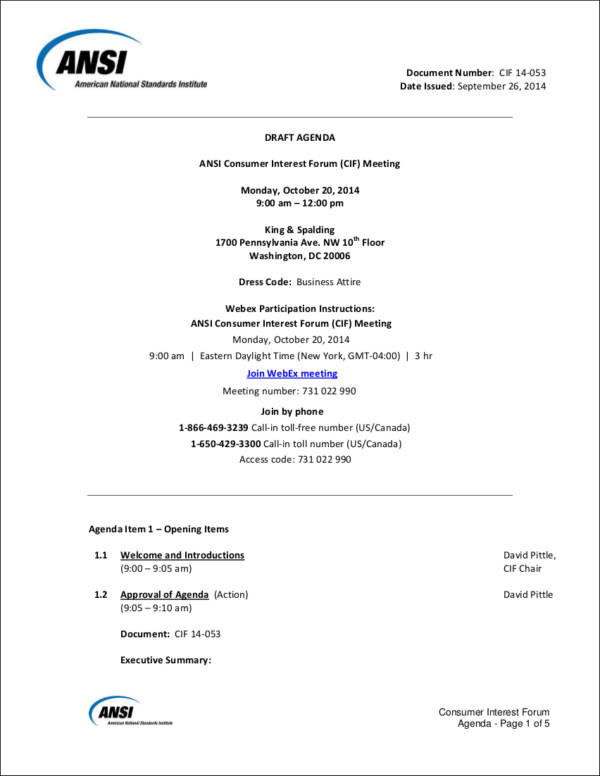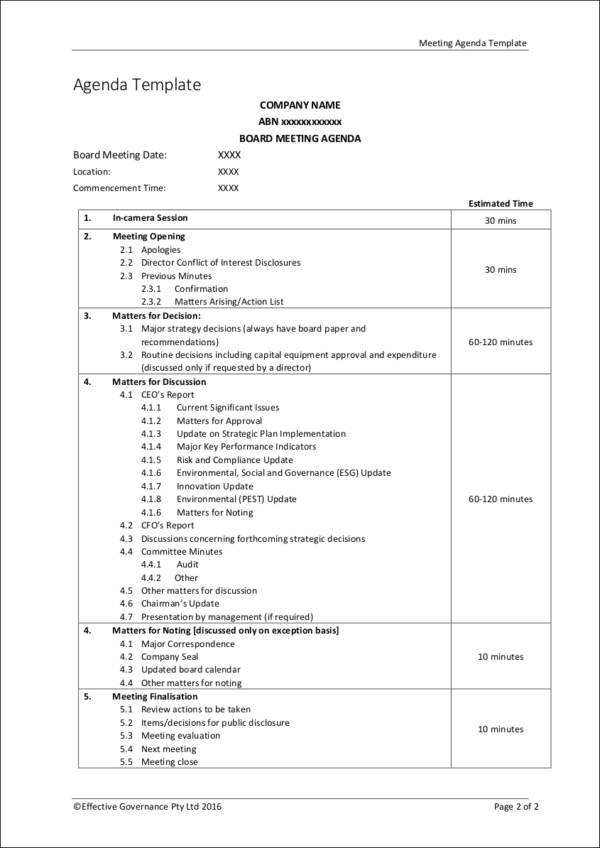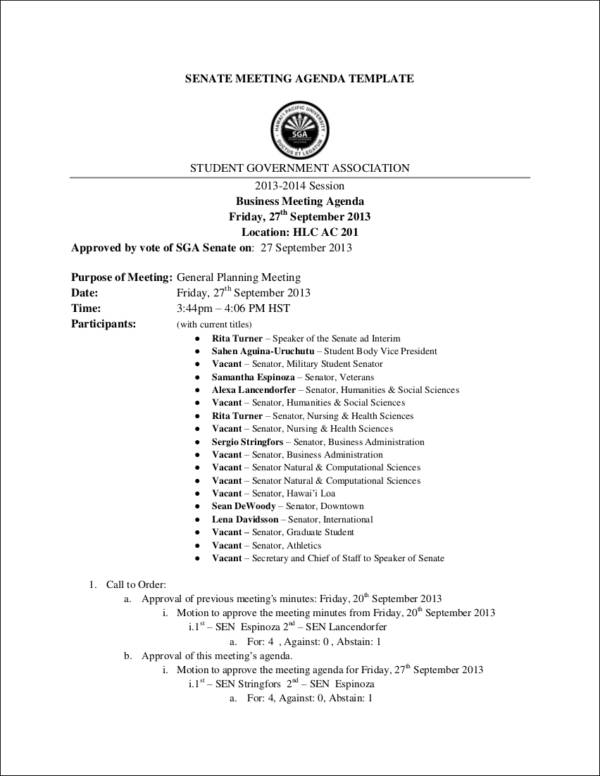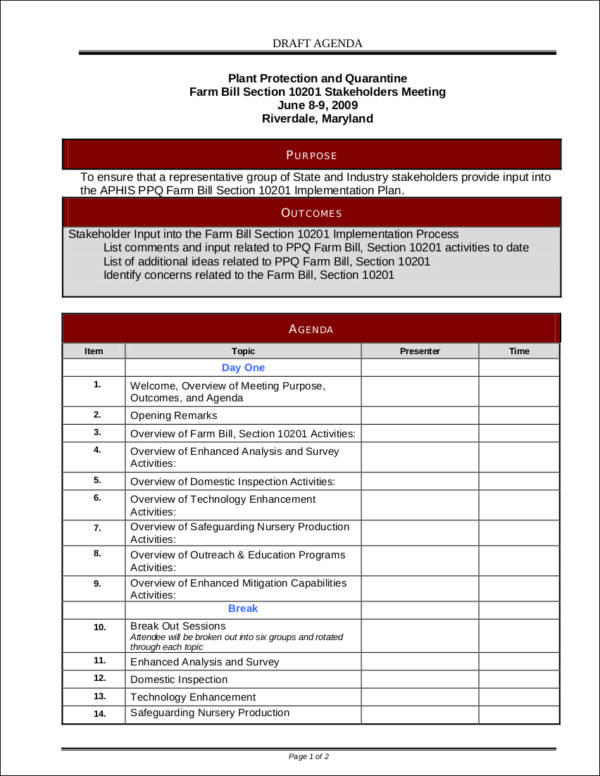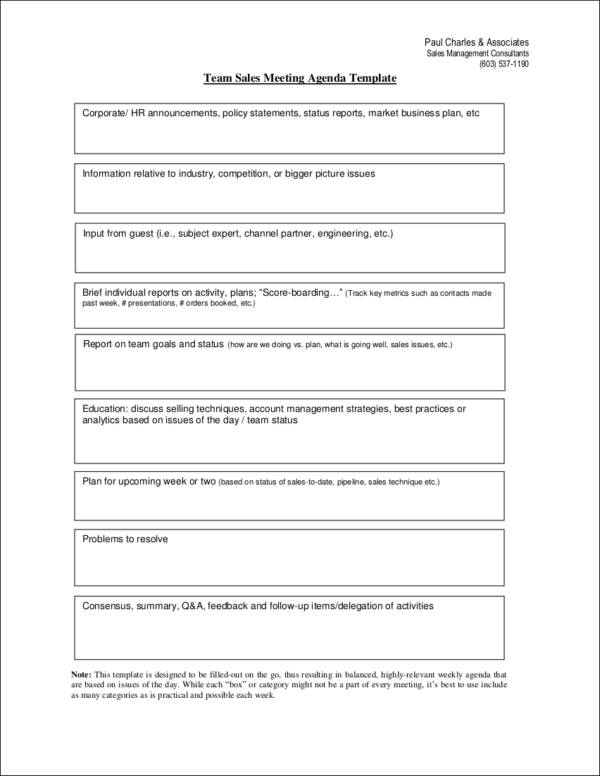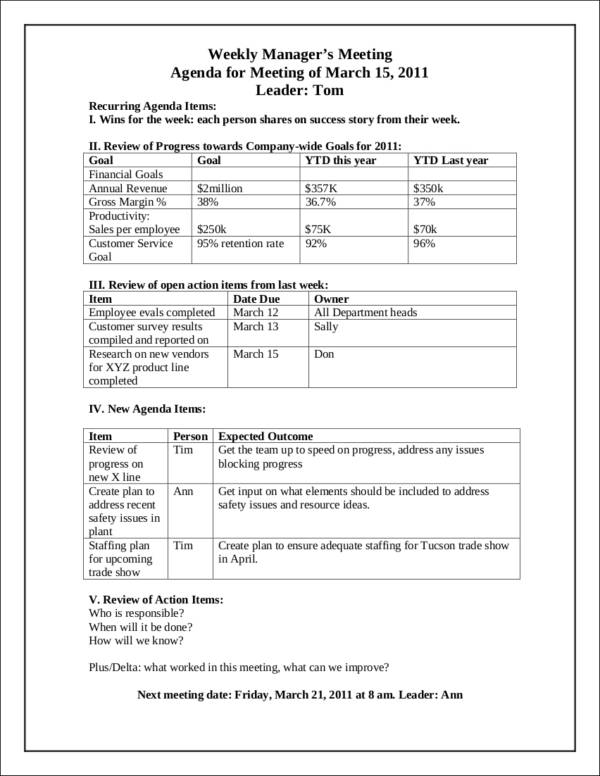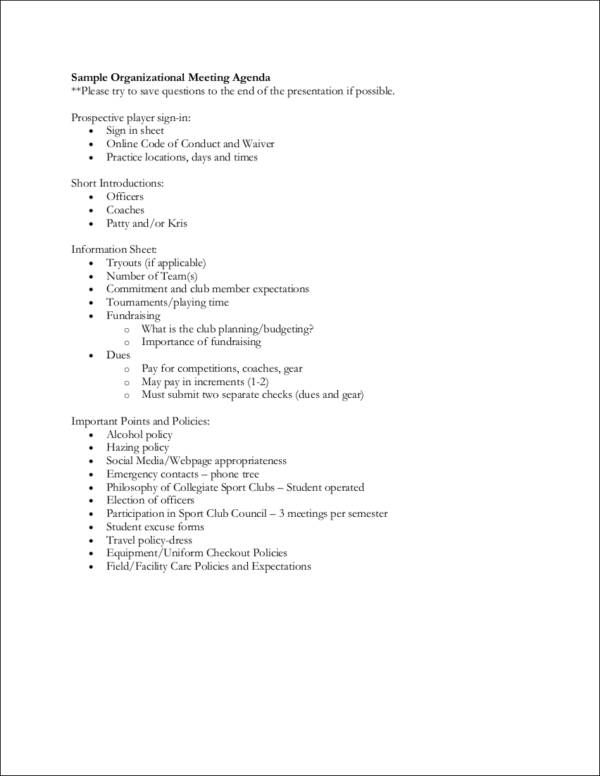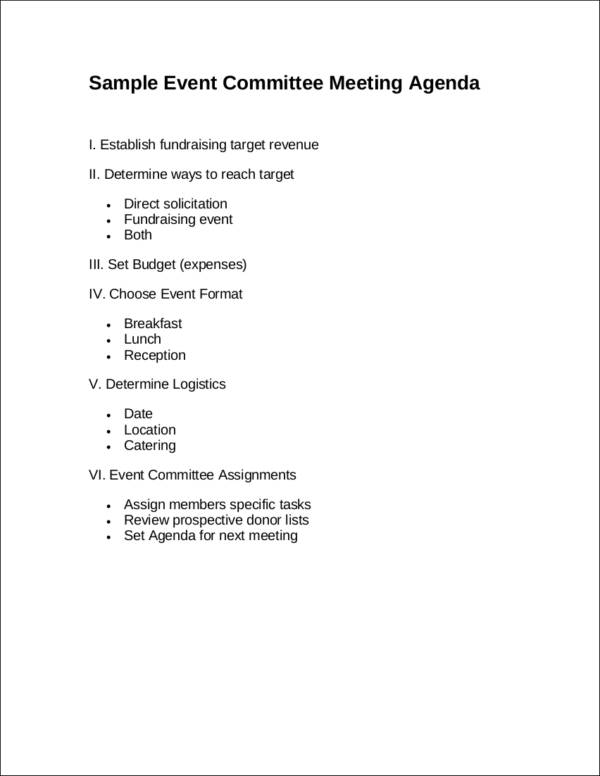When running a business or a company, proper communication is essential to be able to operate the business on a daily basis. How exactly do businesses and organizations communicate and discuss important issues within the different departments of the company? This is done through conducting meetings on a regular basis. A meeting is a gathering done by two or more individuals in the business or company. Meetings can be done for various purposes such as to discuss information, solve a particular issue, review the status of the company or business, implement changes and rules, celebrate the success of the business, and most importantly in making critical decisions in the organization.
Conducting a meeting may sound simple, but there are necessary steps that one needs to follow in order to have a successful and productive meeting. Before you start the meeting, it is important that you have an agenda that will guide you through the meeting process. Being prepared before a meeting is essential to ensure that all the important issues and points are discussed in an organized manner. In this article, you can read about the definition of an agenda, its purpose, the steps in effectively facilitating a meeting, and other relevant information that will be useful for you. You will also find agenda templates like a board meeting agenda, business meeting agenda, training agenda, and other types of agenda that you can download in this article and on our site.
Meeting Agenda Sample Template
Sample Draft Meeting Agenda
Co-Planning Meeting Agenda Template
Board Meeting Agenda Template
What Is the Purpose of an Agenda?
An agenda is a document or a tool that is used to outline the items that are going to be discussed or tackled during the meeting. Through an agenda, individuals will be able to properly organize and prepare all the essential items that are needed to ensure the meeting will be productive. Providing an agenda before a meeting is necessary. To help you further understand the purpose of a meeting agenda, the purposes of an agenda are as follows:
- A meeting agenda allows you to set the right tone before you start a meeting. Providing a meeting agenda beforehand lets the members or participants know what the purpose of the meeting is, which will allow them to prepare and understand what to expect during the meeting.
- An agenda also helps you identify the different topics or issues that will be discussed in the meeting. Through a meeting agenda, you will be able to organize the topics for discussion to ensure that you will have a smooth flow during the meeting process. Knowing what topics to discuss will also help you save time by focusing on important matters.
- A meeting agenda ensures that everyone participating in the meeting is focused. Since you have outlined the topics to be discussed, members will be more focused on discussing the essentials in order to arrive at a conclusion at the end of the discussion.
- Another purpose of having an agenda is that it eliminates excuses during the meeting. Members and participants won’t be able to reason out that they are unprepared for the meeting or they have no idea on the topics that are going to be discussed during the meeting.
- Through a meeting agenda, you will have a written document that will serve as a reference for future meetings and as documentation for every meeting that you hold.
- A meeting agenda ensures that all the important matters are covered during the meeting. It also specifies the individuals who are responsible for discussing the topics and issues.
Senate Meeting Agenda Template
Stakeholders Meeting Agenda Sample
Team Sales Meeting Agenda Template
How Do You Effectively Facilitate a Meeting?
The main role of a meeting facilitator is to lead the meeting to ensure that it goes smoothly, as well as achieves the goals that are needed to be accomplished at the end of the discussion. It is also important that the members and participants fully understand the scope and purpose of the meeting to assure that everyone is on the same page. If you are tasked to facilitate a meeting, refer to the steps below to help you effectively facilitate the meeting.
- Preparing all the materials and documents such as a meeting agenda is important before you start the meeting. Creating an agenda allows you to clearly outline or format all the essential information that you will need before, during, and after the meeting.
- Create a list of the individuals or participants that are expected to attend the meeting. It is important that you include individuals that can contribute to the success of the meeting to ensure that you accomplish the set goals and objectives.
- Send out the invite list to the people expected to attend the meeting. You can opt to send them through email to make it easier and convenient for both the facilitator and the attendees.
- Reflect on what an effective facilitator should do during the meeting. Through this, you will be able to develop the various traits that every good facilitator has in order to do the job or task well.
- Decide on the location where the meeting will be done. Set up all the essential materials and furniture beforehand. You should also be able to provide the materials for the attendees such as pens, notepads, handouts, and other important tools that are needed during the meeting.
- When you start the meeting, ensure that you provide a recap of the objectives to set the tone of the meeting.
- Ensure that everyone involved in the meeting will provide their outputs. Allow all the attendees to speak or discuss the topics that are essential.
- An effective meeting facilitator makes sure that the discussion is on the topic. An off topic discussion not only defeats the purpose of the agenda but also wastes time.
- Conclude the meeting by asking for feedback from the members and participants of the meeting.
How to Write a Meeting Agenda
Many people often underestimate the importance of having a meeting agenda for their meetings since they think of it as extra work. Sure, you can have a meeting without having an agenda, but you won’t be able to guarantee that you will have an organized and successful meeting. Understanding the process of writing a meeting agenda will make it easier for you to create one. The steps in writing a meeting agenda are as follows:
- In order to have a well-formatted meeting agenda, you can download the meeting agenda samples and templates that are available in this article and on this site. If you want to create one from scratch, you can follow the steps below.
- To start, provide a title for the meeting agenda that you are creating. Having a title will allow readers to get an overview of the purpose of the meeting.
- Write a list of the members or participants that are invited to the meeting, the location of the meeting, and the date when the meeting is scheduled. Also, include special guests that will be present during the meeting.
- Write the objectives and goals of the meeting. It is important that you specify what needs to be accomplished at the end of the session. A meeting agenda without an objective will only be a waste of time.
- Outline the topics or issues that are going to be discussed during the meeting and allocate the time for each of the topics or issues that are going to be discussed.
- Write other necessary information that you may want to include in your meeting agenda.
Weekly Meeting Agenda Sample
Sample Organizational Meeting Agenda
Sample Event Committee Meeting Agenda
What Are the Essential Components That Need to Be Present in a Meeting Agenda?
There are a number of essential elements or components that every meeting agenda should have in order for it to be an effective document. The components that need to be present in every meeting agenda are as follows:
- Title – the title of the meeting should indicate the type of meeting or the topic of the meeting.
- Date and time – when you create a meeting agenda, it is important to indicate the time and date of the meeting. Since you will be sending out a copy of the meeting agenda beforehand, indicating the date and time will assure that participants will be there on time.
- Location of the meeting – providing the exact address of the meeting location is necessary in order for individuals to know where to meet. You can indicate the name of the conference room or if you are doing a meeting outside the company premises, you can provide a map in your meeting agenda.
- Roles – during the meeting, various individuals are tasked to discuss the different topics and issues. Indicating the roles of each member is essential to be able to have a smooth flow during the meeting. This also allows members to prepare all the necessary visuals or materials before the start of the meeting.
- Topics – providing a list of the topics that are going to be covered during the meeting is also important. This keeps the meeting focused on the goals and objectives that are needed to be achieved.
Useful Meeting Agenda Tips
To help you in creating a meeting agenda, here are some tips that are useful to ensure that you will have a productive meeting.
- Always set expectations in your meeting agenda. Setting expectations help participants and team members prepare before the meeting as well as allocate the time for each discussion.
- Include a timeline of the meeting in your agenda to be able to stick to the meeting schedule.
- Remember to share the responsibility to other members of the team. Everyone’s contribution can greatly add to the success of the meeting that is going to be done.
- Remember to provide enough time at the end of the meeting to discuss points in the meeting. This is when questions and clarifications are done.
- Proofread all the information and data in your meeting agenda to ensure that it is accurate before you send them out to the team members.
- Keep your meeting agenda simple and on point to ensure that people will easily understand all the information.
Related Posts
FREE 10+ Strategy Meeting Agenda Samples in PDF
FREE 10+ Family Meeting Agenda Samples in PDF
FREE 10+ Day Agenda Samples in MS Word | Pages | Google Docs | PDF
FREE 10+ Program Agenda Samples in PDF
FREE 10+ Committee Meeting Agenda Samples in MS Word | Pages | Google Docs | PDF
FREE 6+ Wedding Agenda Samples in MS Word | PDF
FREE 10+ Retreat Agenda Templates in PDF | MS Word
FREE 18+ Safety Agenda Samples & Templates in MS Word | PDF
FREE 10+ Board Agenda Samples & Templates in PDF | MS Word
FREE 10+ Interview Agenda Samples and Templates in PDF | MS Word
FREE 7+ Travel Agenda Samples and Templates in PDF
FREE 10+ Project Agenda Samples and Templates in PDF | MS Word
FREE 12+ Sales Agenda Templates in PDF | MS Word
FREE How Meeting Agendas Result in Actionable Productivity [ Making Your Meeting Agenda ]
FREE Strategies to Overcome the Risk to Your Company’s Agenda [ Definition, Steps for Overcoming Risks ]
